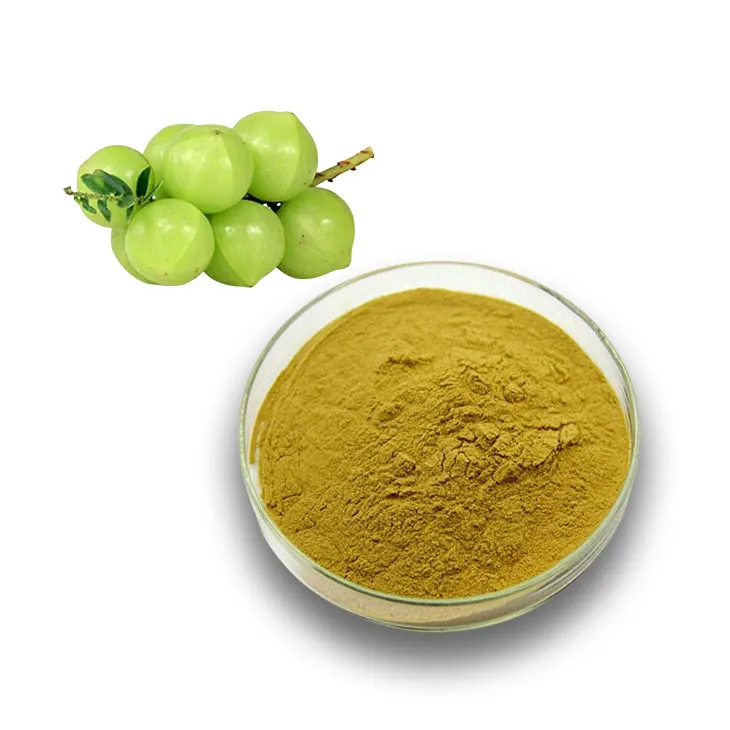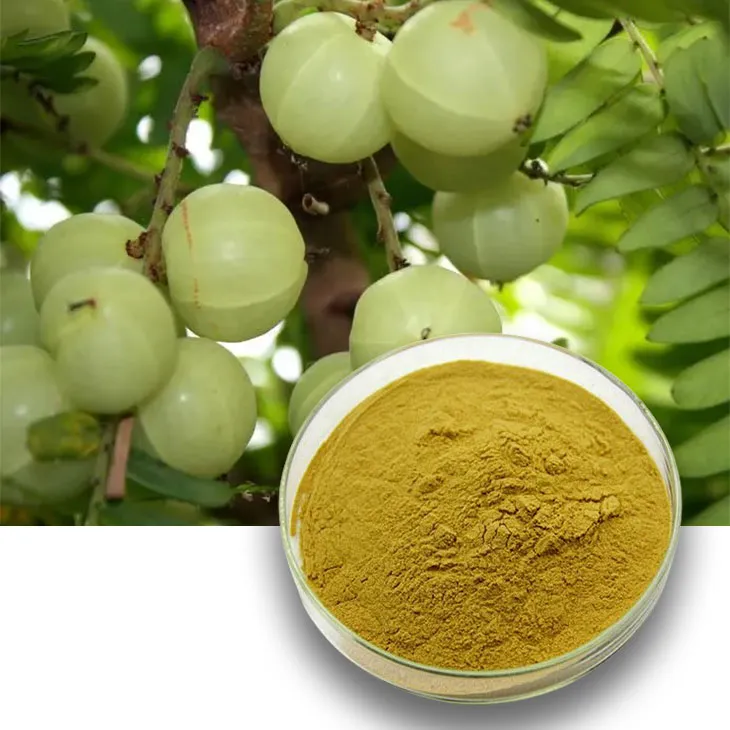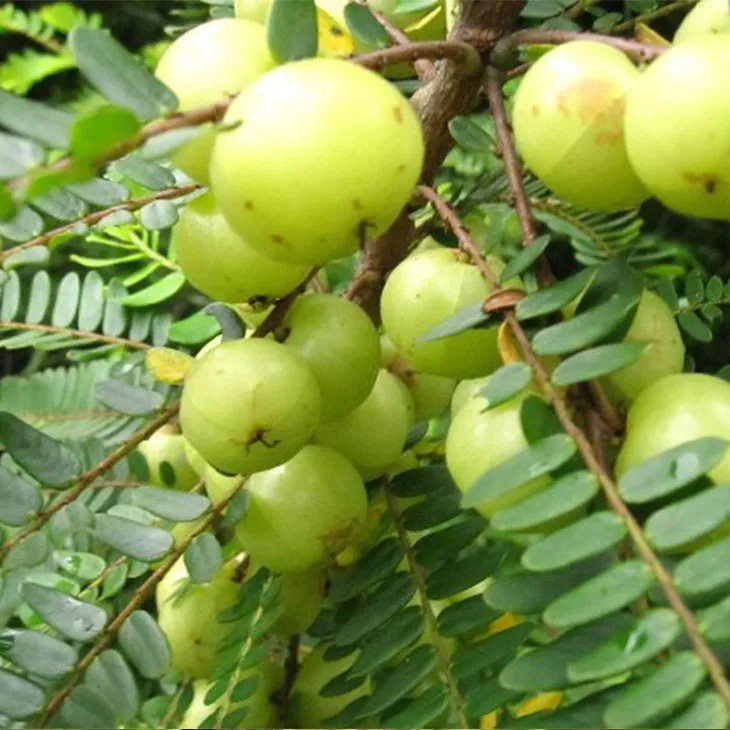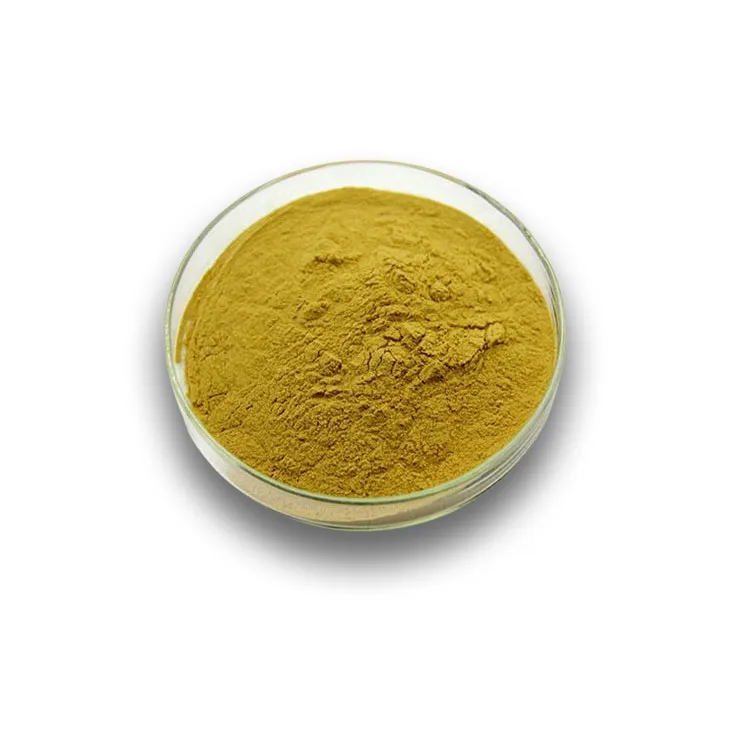- 0086-571-85302990
- sales@greenskybio.com
Phyllanthus emblica extract: China vs. the United States
2024-11-29

1. Introduction
Yuganzi, also known as Phyllanthus emblica, has been an important plant in both China and the United States, albeit with different degrees of utilization and research focus. China has a long - standing relationship with Yuganzi, where it has been used in traditional medicine for centuries. In the United States, while the use of Yuganzi is not as deeply rooted in traditional practices, modern scientific research has started to explore its potential in various industries.

2. Research Focuses
2.1 China
In China, the research on Yuganzi extract is heavily influenced by traditional medicine concepts. Traditional Chinese medicine (TCM) views Yuganzi as having properties such as clearing heat, detoxifying, and promoting digestion. Researchers in China often focus on validating these traditional claims through modern scientific methods. For example, studies may be carried out to investigate how Yuganzi extract can help in treating certain internal heat - related diseases as described in TCM.
Moreover, research in China also delves into the synergistic effects of Yuganzi extract when combined with other traditional Chinese herbs. This is based on the principle of formulating herbal prescriptions in TCM, where multiple herbs are combined to enhance the overall therapeutic effect.
2.2 United States
In the United States, the research focus on Yuganzi extract is more inclined towards its potential in the nutraceutical and pharmaceutical industries. Scientists are interested in identifying the specific bioactive compounds in Yuganzi extract that can be used for health promotion or disease prevention. For instance, they may be looking for compounds that have antioxidant, anti - inflammatory, or anti - cancer properties.
Another aspect of research in the US is the study of Yuganzi extract's safety and efficacy in a Western medicine context. This includes conducting clinical trials to determine the appropriate dosage, potential side effects, and interactions with other drugs.

3. Extraction Techniques
3.1 China
China has a rich heritage of extraction techniques, some of which have been passed down for generations in the context of traditional medicine. Traditional extraction methods for Yuganzi extract in China include decoction, which involves boiling the Yuganzi fruits in water to extract the active components. This method is simple and has been used in households for preparing herbal remedies.
However, with the advancement of modern technology, more sophisticated extraction techniques are also being adopted in China. For example, supercritical fluid extraction is being explored. This method uses supercritical fluids, such as carbon dioxide, as solvents under specific temperature and pressure conditions to extract the desired compounds from Yuganzi more efficiently and selectively.
3.2 United States
In the United States, the extraction techniques for Yuganzi extract are mainly based on modern scientific principles. High - performance liquid chromatography (HPLC) - based extraction methods are commonly used. HPLC allows for the precise separation and extraction of specific bioactive compounds from Yuganzi extract. This is crucial for isolating and purifying compounds for further research and development in the pharmaceutical and nutraceutical industries.
Another technique used in the US is microwave - assisted extraction. This method utilizes microwave energy to accelerate the extraction process, reducing the extraction time while maintaining the quality of the extracted compounds.

4. Regulatory Environments
4.1 China
In China, the regulatory environment for Yuganzi extract is closely related to the regulation of traditional Chinese medicine. The State Administration for Market Regulation and relevant regulatory bodies play important roles in ensuring the quality, safety, and efficacy of Yuganzi extract products. Traditional Chinese medicine products containing Yuganzi extract are required to comply with strict quality standards, including raw material sourcing, production processes, and quality control during manufacturing.
For Yuganzi extract products that are classified as health - care products, they need to go through a series of approval procedures, including pre - market evaluation of safety and functionality. These regulations are designed to protect consumers and promote the healthy development of the traditional Chinese medicine industry.
4.2 United States
In the United States, the regulatory environment for Yuganzi extract is mainly governed by the Food and Drug Administration (FDA). If Yuganzi extract is intended to be used as a dietary supplement, it is subject to the Dietary Supplement Health and Education Act (DSHEA). Under DSHEA, manufacturers are responsible for ensuring the safety of their products before marketing, but the FDA does not pre - approve dietary supplements for safety and effectiveness.
However, if Yuganzi extract is being developed as a pharmaceutical drug, it has to go through a much more rigorous and time - consuming approval process. This includes pre - clinical and clinical trials to prove its safety and efficacy, which can take years and cost a significant amount of money.

5. Market Potential
5.1 China
China has a large domestic market potential for Yuganzi extract. Due to the long - standing acceptance of traditional Chinese medicine, there is a significant consumer base that is receptive to Yuganzi - based products. Yuganzi extract is used in various forms in China, such as in herbal teas, tinctures, and traditional Chinese medicine prescriptions. With the increasing popularity of health - conscious lifestyles, the demand for natural and traditional medicine - based products like Yuganzi extract is expected to grow further.
Moreover, China is also exploring the export potential of Yuganzi extract. As traditional Chinese medicine gains more international recognition, Yuganzi extract products may find new markets in other countries, especially those with an interest in traditional medicine and natural health products.
5.2 United States
In the United States, the market potential for Yuganzi extract is mainly in the nutraceutical and pharmaceutical sectors. The growing trend of consumers seeking natural alternatives for health promotion and disease prevention provides an opportunity for Yuganzi extract - based products. Dietary supplements containing Yuganzi extract may attract health - conscious consumers who are interested in its potential antioxidant, anti - inflammatory, or other health - promoting properties.
If Yuganzi extract can be successfully developed into a pharmaceutical drug, it could have a significant impact on the US pharmaceutical market, especially in areas such as cancer treatment or chronic disease management, given its potential bioactive compounds.
6. Conclusion
In conclusion, both China and the United States have their own characteristics in the research, extraction, regulation, and market potential of Yuganzi extract. China's approach is deeply influenced by its traditional medicine heritage, while the United States focuses more on modern scientific research and industrial applications. Understanding these differences can help promote international cooperation in the research and development of Yuganzi extract, and also contribute to the better utilization of this valuable plant resource in both countries and globally.
FAQ:
What are the main research focuses on Phyllanthus Emblica Extract in China?
In China, the research on Phyllanthus Emblica Extract often focuses on its traditional medicinal properties. Scientists may study how it can be used to regulate the body's internal balance according to traditional medicine concepts. For example, its potential in promoting digestion, enhancing the immune system which are aspects often explored in line with the long - standing traditional medical knowledge.
What are the main research focuses on Phyllanthus Emblica Extract in the United States?
In the United States, the research on Phyllanthus emblica extract mainly centers around modern scientific research aspects. This includes studying its chemical composition in detail, exploring its potential bioactive compounds, and investigating how these compounds can be applied in the nutraceutical and pharmaceutical industries. For instance, researchers may look into its antioxidant properties from a scientific and mechanistic perspective for possible use in developing new drugs or health supplements.
How do the extraction techniques of Phyllanthus emblica extract differ between China and the United States?
In China, extraction techniques may be more influenced by traditional methods passed down through generations, which might be combined with some modern extraction technologies. These methods could be designed to preserve the components relevant to traditional medicinal uses. In the United States, extraction techniques are typically based on modern scientific principles. High - tech and precise extraction methods are often used to isolate specific bioactive compounds for further study and potential commercial applications, aiming for high purity and consistent quality.
What are the differences in the regulatory environments for Phyllanthus emblica extract in China and the United States?
In China, the regulatory environment for Phyllanthus emblica extract is closely related to traditional medicine regulations. It needs to meet certain quality standards set for traditional herbal products. If it is used as a medicine, it has to go through strict approval processes similar to other pharmaceuticals. In the United States, if Phyllanthus emblica extract is considered as a dietary supplement, it is regulated under the Dietary Supplement Health and Education Act (DSHEA). However, if it is to be developed as a drug, it has to meet the more stringent requirements of the Food and Drug Administration (FDA) for drug approval.
What is the market potential of Phyllanthus emblica extract in China and the United States?
In China, due to its long - standing use in traditional medicine, there is a stable market demand. It can be found in various forms in the traditional medicine market, and with the increasing interest in traditional medicine research and development, its market potential may continue to expand. In the United States, as consumers are increasingly interested in natural products with potential health benefits, the market potential for Phyllanthus emblica extract as a nutraceutical or ingredient in health products is also growing. However, it needs to meet regulatory requirements and gain consumer acceptance through scientific evidence - based marketing.
Related literature
- Phyllanthus emblica: A Review of Its Phytochemistry, Ethnopharmacology, and Pharmacology"
- "Traditional and Modern Perspectives on Phyllanthus emblica: A Medicinal Plant with Diverse Applications"
- "The Nutraceutical Potential of Phyllanthus emblica Extract in the Global Market"
- ▶ Hesperidin
- ▶ citrus bioflavonoids
- ▶ plant extract
- ▶ lycopene
- ▶ Diosmin
- ▶ Grape seed extract
- ▶ Sea buckthorn Juice Powder
- ▶ Beetroot powder
- ▶ Hops Extract
- ▶ Artichoke Extract
- ▶ Reishi mushroom extract
- ▶ Astaxanthin
- ▶ Green Tea Extract
- ▶ Curcumin Extract
- ▶ Horse Chestnut Extract
- ▶ Other Problems
- ▶ Boswellia Serrata Extract
- ▶ Resveratrol Extract
- ▶ Marigold Extract
- ▶ Grape Leaf Extract
- ▶ blog3
- ▶ blog4
-
Organic Hawthorn Powder Suppliers.
2024-11-29
-
Organic cocoa extract of trace components.
2024-11-29
-
The best - quality vitamin K2.
2024-11-29
-
Uridine-5'-monophosphate Disodium salt
2024-11-29
-
Avocado Extract Powder
2024-11-29
-
Camu Camu Extract
2024-11-29
-
Coconut Water Powder
2024-11-29
-
Elderberry Extract
2024-11-29
-
Giant Knotweed Extract
2024-11-29
-
Phyllanthus Emblica Extract
2024-11-29
-
Eucommia Ulmoides Extract
2024-11-29
-
Feverfew Extract
2024-11-29
-
Dandelion Leaf Extract
2024-11-29




















